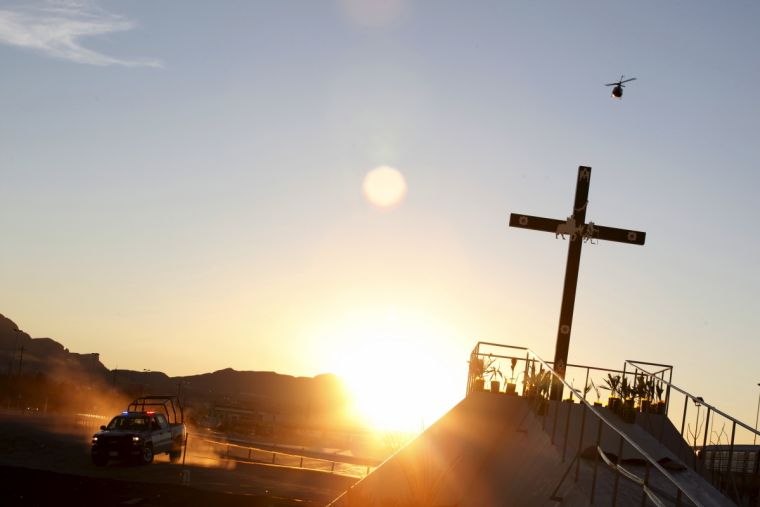Pope to pray for migrants at Mexico-US border

Pope Francis heads to the once notorious Mexican border city of Ciudad Juarez on Wednesday, a major migrant crossing on the US doorstep where grisly drug violence has killed thousands, to pray for those who risk their lives migrating north.
Once one of the world´s deadliest cities, Ciudad Juarez remains a violent magnet for Mexican, Central American and Asian migrants looking to jump across the US border.
Pope Francis heads to US-Mexico border today for prayer service w/ undocumented migrants. He'll pray from this spot. pic.twitter.com/8zoJhquhKU
— Michael O'Loughlin (@MikeOLoughlin) February 17, 2016
Francis' visit, and his focus on the plight of migrants who risk murder, rape and extortion in their quest to reach the United States, is a symbolic critique of the anti-immigrant rhetoric of candidates for the 2016 Republican presidential nomination.
Billionaire Donald Trump has surged ahead of his rivals with his message that Mexico is "killing" the United States with cheap labor, while sending over "criminals, drug dealers (and) rapists." He has also called for a border wall to be built.
Trump last week dubbed the Pope "a very political person", saying he believed the Mexican government had put him up to the border visit.
"To suggest that the Pope is an instrument of the Mexican government, no. That is very strange indeed," said Father Federico Lombardi, the Vatican spokesman, shortly before the pontiff was due to arrive in Ciudad Juarez.
"The Pope always speaks of the problems of immigration. If Mr. Trump were to come to Europe he would see that the Pope has said the same things about immigration to the Italians, the Germans, the French and the Hungarians."
The Pope will be driven to the fence that separates Mexico from the United States, and will celebrate Mass just 80 yards (73 meters) from the crossing.
The Pope's arrival in Juarez comes as the number of Central American children and families apprehended at the border rises, in a spike reminiscent of a 2014 flood of migrants that created a major political headache for US President Barack Obama.
The number of drug murders in the dusty manufacturing city of about 1.5 million people has fallen in recent years, but violence persists.
The murder rate "is still very high", said businessman Jorge Contreras, who owns a local furniture maker. "As long as there is demand (for drugs) in the United States, there will always be supply."
During the 1990s, the Juarez Cartel took over the city. With its steady flow of deported Mexicans and corrupt cops, Juarez was the perfect location for a successful smuggling operation.
After escaping jail in 2001, Joaquin "El Chapo" Guzman and his Sinaloa cartel sought to take control of the city, sparking a turf war that claimed around 12,000 lives.
Drug violence peaked around 2010 and 2011. At its worst, the murder rate was 254 homicides per 100,000 people said Luis Mario Dena, a coordinator of the Inter-institutional Roundtable For The Recovery of Juarez. The rate has since fallen to 40.
Immigration reform remains one of the most divisive issues in US politics, and a key theme in the 2016 presidential vote.
A 2014 Obama immigration initiative that would protect more than 4 million illegal immigrants from deportation has still not gone into effect, and faces an uncertain future with the Supreme Court set to decide on its constitutionality.
US Representative Henry Cuellar, who hails from the Texas-Mexico border, hoped the Pope's visit would help people view the immigration debate differently.
"I don't think (the Pope's) thinking about Donald Trump, but I think his words will certainly counter what he says," he said.











